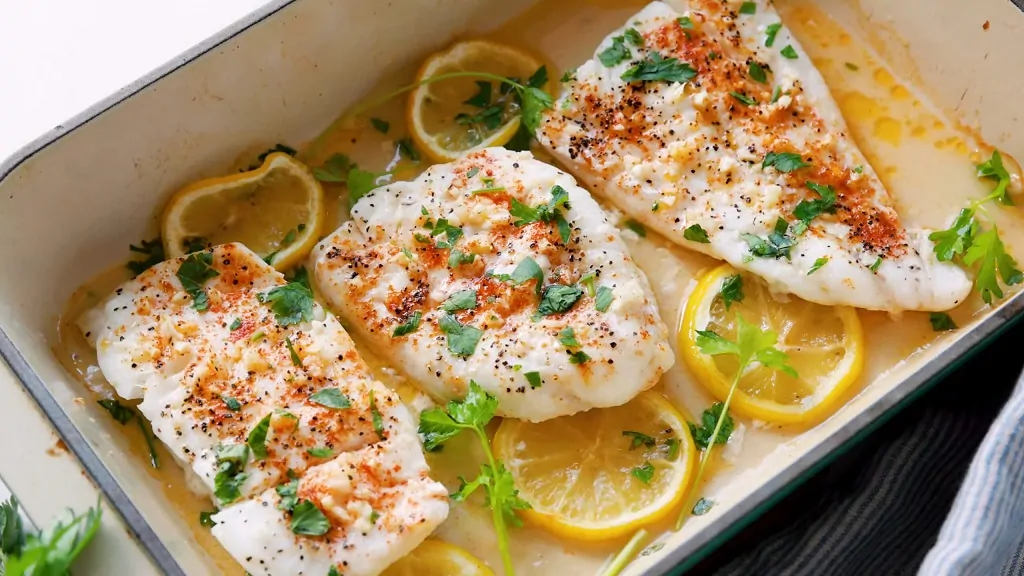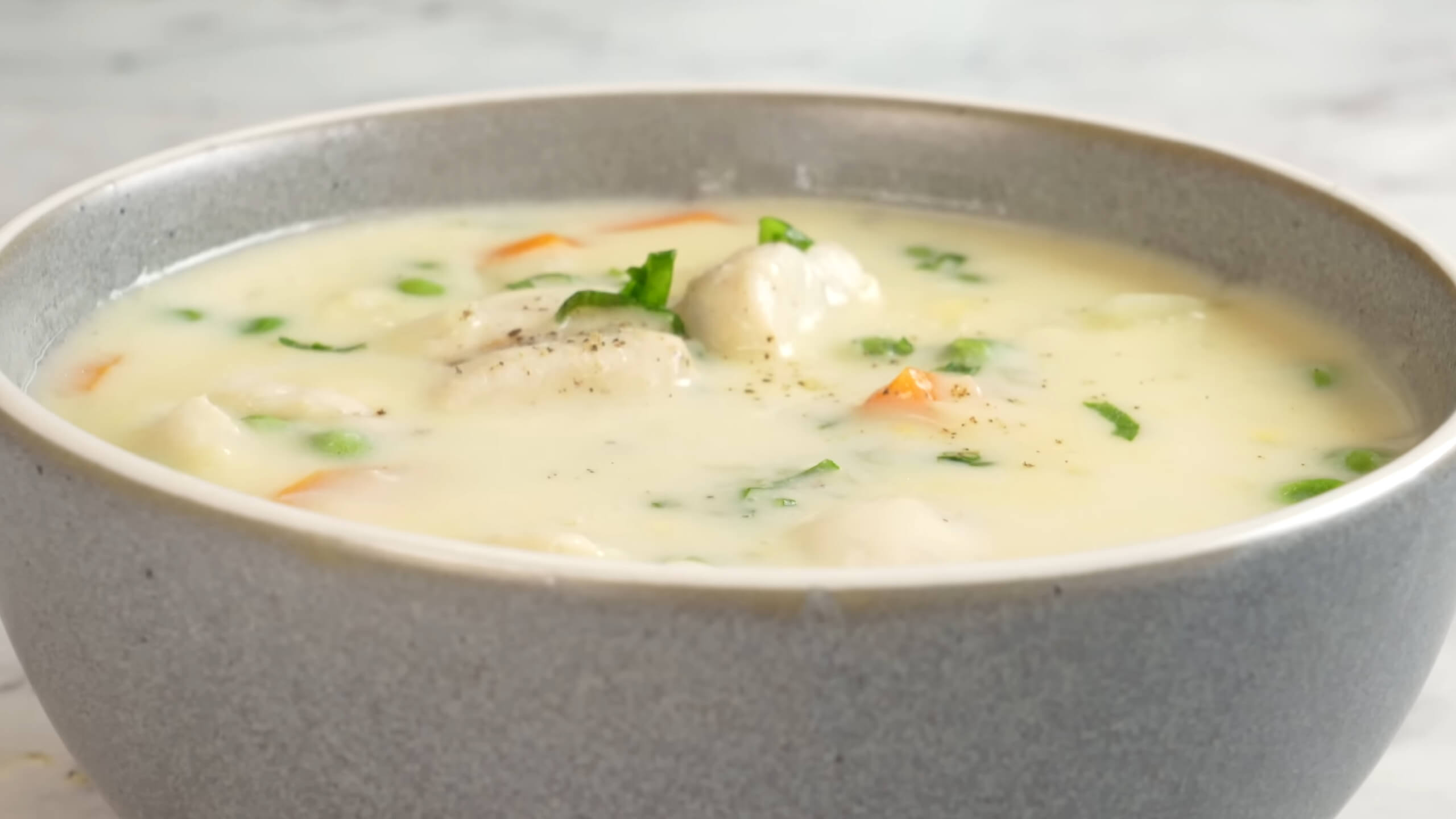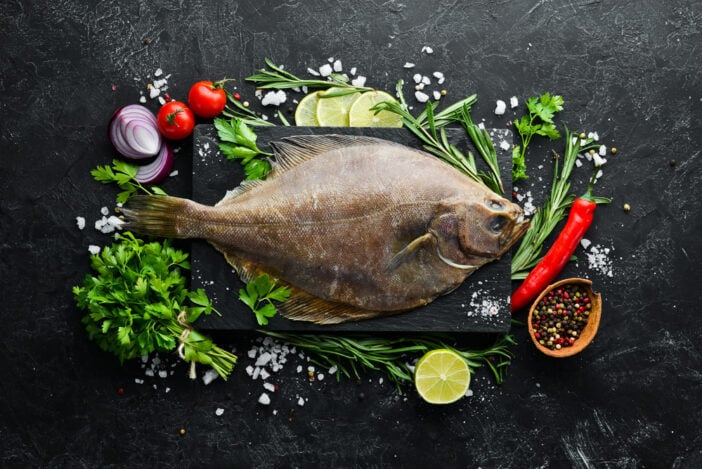Choosing the right fish for a meal can be tricky, especially when deciding between flounder and cod. Both are popular white fish, each with its own unique flavor and texture.
So I decided to compare them and see which one suits my taste. I prefer fish and other seafood as it is delicious and full of healthy nutrients. Also, there are so many amazing recipes you can make with seafood.
For instance, I recently explored imitation crab meat and found some brands that are offering the taste same as I got the real crab. I enjoyed the exploration, and hope this one will be as exciting. So, let’s continue with the fish comparison.
Cod offers a firm and mild profile, while flounder delivers a delicate, tender taste. Each fish has its strengths, and knowing the differences can help you make the best choice for your cooking style and taste preferences.
I’ll Start With a Basic Comparison
| Characteristic | Flounder | Cod |
|---|---|---|
| Flavor | Delicate, slightly sweet | Mild, slightly sweet |
| Texture | Tender, flaky | Firm, flaky |
| Common Cooking Methods | Pan-searing, poaching, steaming | Grilling, broiling, frying |
| Best Dishes | Stuffed fillets, sole meunière | Fish and chips, baked cod |
| Nutritional Benefits | High in vitamin D | High in omega-3 fatty acids |
I Prefer The Taste of Cod, But It’s Personal

Personally, I tend to lean toward cod. It has a bit more flavor, and I like how its mild sweetness stands out, especially in a classic dish like fish and chips. Cod just seems to hold its own more when it comes to seasoning and batter.
Flounder, though, is much milder. Its subtle flavor is perfect when you want the fish to be lighter, letting the other ingredients shine through. I find flounder works well in dishes where the fish isn’t supposed to be the star, but more of a background player.
So, if you want a fish with a little more punch, cod is the better pick. If you’re looking for something lighter and more delicate, flounder is the way to go.
Which One is More Popular?
Cod is generally more common in cuisine, especially in Western countries. It’s often featured in dishes like fish and chips and is a key ingredient in many chowders and stews. Its firm texture and slightly stronger flavor make it a versatile fish, suitable for grilling, frying, or baking.
Flounder, while still enjoyed, is not as widely used as cod. It’s favored in more delicate dishes, particularly in French and Mediterranean cooking. Because of its softer texture, it’s usually roasted, poached, or steamed, rather than being fried or used in heavy dishes.
Best Recipes with Cod
Cod is a fish that fits well into a variety of dishes. It has a mild, flaky texture that works in everything from simple baked meals to more complex fried recipes. Here are some of the best ways to cook cod.
Baked Cod with Lemon and Garlic

Baked cod with lemon and garlic is a simple and tasty option. Cod fillets are seasoned with salt, pepper, minced garlic, and fresh lemon juice. After baking for about 15-20 minutes at 400°F, the fish becomes tender and juicy, making it a great choice for a quick, healthy meal. Pair it with roasted vegetables or a light salad for a balanced dish.
Cod Fish Tacos
Cod fish tacos offer a fresh twist. The cod is lightly seasoned and pan-seared to a golden crisp. Then, it’s placed in soft tortillas along with crunchy cabbage slaw, a dollop of sour cream, and a squeeze of lime. This is a perfect dish for a casual dinner.
Classic Fish and Chips
A classic choice for cod is fish and chips. The fish is coated in a crispy batter and fried until golden brown. Serve with thick-cut fries and tartar sauce for a satisfying meal that brings comfort and flavor.
Cod Chowder

Cod chowder is a hearty soup made for colder days. Flaky cod is simmered with potatoes, onions, celery, and carrots in a creamy broth, creating a comforting meal. It’s filling and perfect for cozy dinners.
There Are Also Delicious Recipes with Flounder
It’s perfect for recipes where you want the fish to be subtle and tender.
Pan-Seared Flounder with Lemon Butter

Pan-seared flounder with lemon butter is a quick and flavorful option. The fish is seasoned with salt and pepper, then seared in a hot pan until golden brown on each side. A rich lemon butter sauce is drizzled on top to enhance the natural flavor of the fish. This dish is simple yet impressive, ideal for a weeknight dinner or a special occasion.
Flounder Fish Tacos
Flounder fish tacos offer a fresh, light meal. The flounder is lightly seasoned and pan-fried until crispy. The fish is then placed in soft tortillas with fresh cabbage slaw, avocado slices, and a squeeze of lime. These tacos are perfect for a casual dinner and can be served with a side of rice or beans.
Baked Flounder with Herbs and Vegetables

Baked flounder with herbs and vegetables is a healthy and easy option. The fish is placed on a baking sheet, surrounded by chopped vegetables like carrots, zucchini, and bell peppers. It’s seasoned with herbs like thyme and rosemary and baked until everything is tender and flavorful. This is a great option for a light, nutritious meal.
Flounder with Garlic and Spinach
Flounder with garlic and spinach is a simple yet flavorful dish. The fish is sautéed in a pan with garlic, then served on a bed of sautéed spinach. It’s light, fresh, and full of flavor, making it an excellent choice for a healthy lunch or dinner.
Which One is Healthier?
When comparing the health benefits of flounder and cod, both are excellent choices for a healthy diet, but they offer different advantages based on their nutritional profiles.
Nutrition Facts – Flounder vs. Cod
| Nutrient | Flounder (100g) | Cod (100g) |
|---|---|---|
| Calories | 91 | 105 |
| Protein | 19g | 20g |
| Fat | 1g | 0.9g |
| Omega-3 Fatty Acids | 0.5g | 0.2g |
| Vitamin D | 139 IU | 46 IU |
| Vitamin B12 | 1.1 mcg | 1.2 mcg |
| Magnesium | 24mg | 27mg |
| Selenium | 33mcg | 34mcg |
Flounder is A Better Source of Vitamin D and Omega-3s
Flounder stands out in a couple of areas. It contains higher levels of vitamin D compared to cod, with about 139 IU per 100 grams, which is significantly more than the 46 IU found in cod. Vitamin D is essential for bone health, immune function, and overall well-being, making flounder a good choice for boosting vitamin D intake.
Additionally, flounder provides more omega-3 fatty acids than cod, which are known for their benefits to heart health, reducing inflammation, and supporting brain function. With 0.5 grams of omega-3s per 100 grams, flounder is a better option if you’re specifically looking to increase these healthy fats in your diet.
Health Benefits and Insights for Flounder and Cod
Flounder
Health Benefits
- Lean Protein Source: Flounder is a lean fish, low in fat and calories, making it ideal for weight management and muscle-building.
- Rich in Vitamin B12: Flounder is a good source of vitamin B12, which supports nerve function and red blood cell formation.
- Omega-3 Fatty Acids: It contains some omega-3 fatty acids, though in lower amounts compared to other oily fish like salmon. These fats are crucial for heart and brain health.
- Lower Mercury Levels: Flounder is considered low in mercury, making it a safe option for frequent consumption, even for pregnant women and young children. This is crucial when balancing fish intake without introducing high levels of toxins.
Potential Issues
- Less Omega-3s Than Other Fish: While flounder provides omega-3s, it doesn’t have as much as fattier fish like salmon or mackerel, which might be a consideration for those seeking to increase omega-3 intake.
- Lean, but Lower Caloric Density: Being a lean fish, flounder may not provide as much energy for individuals who require higher caloric intake, such as athletes or those with higher energy needs.
Cod
Health Benefits
- High in Protein: Cod is high in protein, which is essential for body tissue repair and immune function. It’s a great option for those focusing on muscle recovery or increasing protein intake.
- Rich in Omega-3s: Cod contains omega-3 fatty acids, which are essential for cardiovascular and brain health. The omega-3 content, though not as high as in fatty fish like salmon, still offers significant benefits.
- Vitamins and Minerals: Cod is rich in vitamin B12, essential for nerve and blood cell function, and it contains phosphorus, selenium, and potassium, all of which play important roles in bone health and metabolism. (Healthline)
Potential Issues
- Mercury Content: Cod is relatively low in mercury compared to larger fish species, but, like all fish, it should still be eaten in moderation to avoid the build-up of mercury over time, especially for pregnant women and children.
- Sustainability Concerns: Some cod species are overfished, so it’s important to look for sustainably sourced options to avoid contributing to environmental damage. This is a key issue with many fish, not just cod. Sustainable sourcing practices are critical for long-term fish populations. The interesting fact is that overfishing even lead to evolution of this species.
Recommendation
- Flounder is ideal for a lean, mild fish option with fewer calories, which is great for weight management and general health.
- Cod provides higher protein and omega-3 content, which is beneficial for heart health, muscle repair, and overall nutrition.
Last Words
In conclusion, both flounder and cod offer valuable nutritional benefits, making them excellent choices for a healthy diet. Flounder stands out for its mild flavor, lower calorie content, and higher vitamin D, while cod is richer in protein and omega-3 fatty acids.
The decision on which fish to choose depends on your specific dietary needs and preferences. Regardless of which fish you opt for, both are low in mercury and offer a host of health benefits when consumed regularly.
Whether you’re looking for a lean protein source or a heart-healthy option, incorporating flounder and cod into your meals can help support overall well-being.

